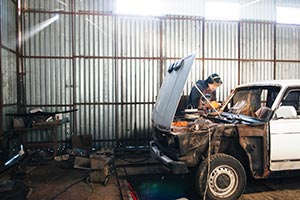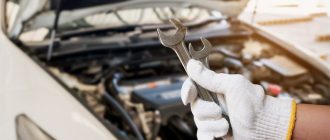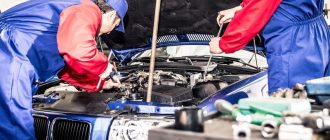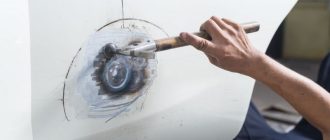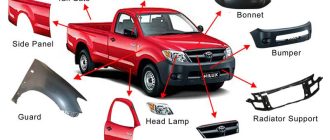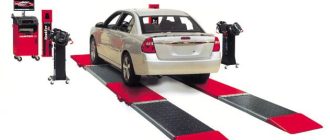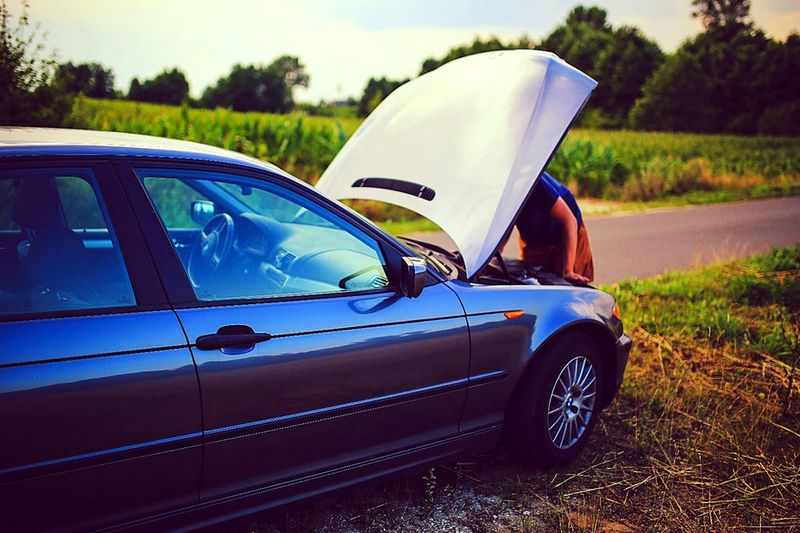
Is It Worth Fixing an Old Car?
When faced with a malfunctioning old car, many people find themselves debating whether it is worth investing in repairs or if it’s time to say goodbye and purchase a new vehicle. This decision can be quite challenging, as there are several factors to consider before making a final choice.
One of the primary factors to consider is whether the old car is still running efficiently and meeting your needs. If the car only requires minor repairs and still functions well, it may be cost-effective to fix it rather than splurging on a new vehicle. However, if the car is constantly breaking down and requiring costly repairs, it might be more practical to invest in a new car.
Another consideration is the financial aspect. Repairing an old car can provide a temporary solution, but it may not be a long-term fix. The cost of repairs can quickly add up, especially if they become frequent. On the other hand, purchasing a new car may require a significant upfront payment or monthly installments, but it can offer a longer-term solution with fewer unexpected expenses.
Ultimately, the decision of whether to fix an old car or purchase a new one depends on your specific circumstances and priorities. It’s important to weigh the pros and cons, consider the value of the car, and determine if the repairs are worth the investment in the long run. Remember, the goal is to have a reliable and safe vehicle that meets your needs without draining your finances.
Cost Considerations of Repairing an Old Car
When it comes to an old car in need of fixing, the decision to repair or not can often be driven by the cost. There are several factors to consider when determining if it is worth fixing an old car:
- Initial Repair Costs: The first cost consideration is the initial repair expenses. It’s important to assess how much it will cost to fix the car and compare it to the value of the vehicle. If the repair costs exceed the overall value of the car, it may not be worth fixing.
- Recurring Repairs: Older cars typically require more frequent repairs. If the car has a history of frequent breakdowns and ongoing issues, it might be worth considering if the constant repairs are worth the investment.
- Depreciation: Another cost consideration is the depreciation of the vehicle. Old cars tend to have lower resale values, so it’s important to factor in how much the repairs will add to the car’s overall value or if it will even make a difference.
- Future Maintenance: In addition to repairs, an old car may require more frequent maintenance, such as tune-ups, oil changes, and other regular upkeep. These ongoing costs should be taken into account when deciding whether to fix the car.
- Fuel Efficiency: Older cars often have lower fuel efficiency compared to newer models. If the car is a gas guzzler, it’s important to consider the long-term cost of fuel and whether it makes financial sense to repair and continue driving the old car.
- Insurance and Registration: Maintenance and repairs can also impact insurance and registration costs. In some cases, the cost of insuring and registering an old car might outweigh the benefits of keeping it.
Ultimately, determining whether it is worth fixing an old car comes down to weighing the repair costs against the overall value and potential for future expenses. Consulting with a trusted mechanic and considering the long-term financial implications can help make an informed decision.
Reliability and Safety of an Old Car
When considering whether it is worth fixing an old car, one of the key factors to consider is the reliability and safety of the vehicle. Older cars may have certain drawbacks in terms of their performance and safety features, which should be taken into account before making a decision.
Reliability:
One of the main concerns with older cars is their reliability. Over time, mechanical and electrical components can wear out or fail, resulting in frequent breakdowns or the need for costly repairs. This can be particularly inconvenient and frustrating, especially if the car is needed for daily transportation. Additionally, older cars may have a limited availability of spare parts, which can make repairs more difficult and time-consuming.
Safety:
Another important consideration when dealing with an old car is its safety. Older vehicles may lack modern safety features such as airbags, anti-lock brakes, or electronic stability control. These features can greatly reduce the risk of accidents and injuries, so their absence in an old car may be a significant drawback. Furthermore, older cars may not meet current safety standards, potentially putting occupants and other road users at greater risk.
It is also important to note that older cars may have outdated technology or inadequate safety ratings compared to newer models. This can affect the overall safety and performance of the vehicle, making it less ideal for daily use.
Considering the reliability and safety factors, it is crucial to assess the condition and maintenance history of an old car before deciding whether it is worth repairing or if it would be more sensible to invest in a new vehicle. Consulting a trusted mechanic or performing a thorough inspection can provide valuable insights into the state of the car and help make an informed decision.
Resale Value of an Old Car
When considering whether to fix an old car or buy a new one, one important factor to consider is the resale value of the old car. Older cars generally have lower resale values compared to newer vehicles. This is due to a variety of factors, such as wear and tear, outdated technology, and changing consumer preferences.
Fixing an old car can help improve its resale value to some extent. By repairing any mechanical issues or cosmetic damage, the car can be made more attractive to potential buyers. Additionally, regular maintenance and servicing can help maintain the overall condition of the car, which can positively impact its resale value.
However, it’s important to consider the cost of repairs when weighing the resale value. If the cost of fixing the car exceeds its potential resale value, it may not be worth investing in repairs. In such cases, it may be more financially prudent to sell the car as-is or consider other options, such as trading it in for a new one.
It’s also worth noting that the resale value of an old car can vary depending on the make, model, and popularity of the vehicle. Some older cars, particularly those with a reputation for reliability or collectability, may retain their value better than others. On the other hand, certain brands or models may not have a strong resale market, making it more challenging to recoup any repair costs.
In conclusion, while fixing an old car can potentially improve its resale value, it’s important to carefully evaluate the cost of repairs and the overall market value of the vehicle. It may be more cost-effective to sell the car as-is or consider purchasing a new one, especially if the repairs needed are extensive or the car has limited resale value.
Environmental Impact of an Old Car
When considering whether to fix an old car or buy a new one, it is important to take into account the environmental impact of continuing to drive an older vehicle. Old cars are typically less fuel efficient and have higher emissions compared to newer models. These factors contribute to air pollution and greenhouse gas emissions, which have a negative impact on the environment.
The production of new cars also has its own environmental consequences, as it requires extracting and processing raw materials, including metals and plastics. Additionally, the manufacturing process and transportation of new cars contribute to carbon emissions. Therefore, by choosing to repair and continue driving an old car, you can help reduce the demand for new cars and potentially minimize the environmental impact associated with their production.
However, it is important to note that older cars may have outdated emission control systems, which can lead to higher pollution levels. Regular maintenance, including ensuring proper functioning of the exhaust system, can help mitigate these issues. Additionally, retrofitting older cars with emission control devices or upgrading to a more fuel-efficient engine can help reduce their environmental impact.
Furthermore, disposing of an old car can also have environmental implications. Improper disposal, such as dumping or abandoning the vehicle, can lead to soil and water contamination. However, proper recycling and waste management practices can help minimize these impacts. Many components of old cars, such as metals and batteries, can be recycled and reused, reducing the need for new raw materials.
In conclusion, the environmental impact of an old car involves various factors, including fuel efficiency, emissions, manufacturing processes, and waste disposal. While driving an old car may contribute to higher pollution levels, it can also help reduce the demand for new cars and promote recycling. Ultimately, the decision to fix an old car should consider not only the financial aspects but also the potential environmental implications.
Customization Options for an Old Car
When it comes to fixing up an old car, there are a variety of customization options available to help breathe new life into your vehicle. Whether you’re looking to improve performance, add modern features, or simply give your car a fresh new look, there are several options worth considering.
One popular customization option for an old car is upgrading the audio system. Many older cars may have outdated or low-quality sound systems, so installing a new stereo, speakers, and subwoofers can greatly enhance your driving experience. Additionally, you can also add features like Bluetooth connectivity, allowing you to easily stream music from your phone or make hands-free calls.
Another customization option is to upgrade the wheels and tires on your old car. By replacing the factory wheels with aftermarket ones, you can give your car a more stylish appearance. Additionally, upgrading to high-performance tires can improve handling and traction, making your driving experience safer and more enjoyable.
If you’re looking to improve the overall performance of your old car, there are several options available. Upgrading the exhaust system or adding a cold air intake can increase horsepower and improve fuel efficiency. Additionally, you may consider installing a performance chip, which can optimize your car’s engine settings for better performance.
For those looking to give their old car a unique, customized look, there are many exterior options available. You can repaint your car in a different color, add vinyl wraps or decals, or install a body kit for a more aggressive appearance. Adding custom headlights, taillights, or grille can also help to personalize your old car and make it stand out from the crowd.
Interior customization options for an old car are also plentiful. You can replace worn-out seats with new ones that offer more comfort and support. Installing new carpeting or floor mats can freshen up the interior, while adding custom trim pieces or a new steering wheel can give your car a more luxurious feel.
These are just a few examples of the many customization options available for an old car. Whether you want to improve performance, enhance the audio system, or simply give your car a new look, there are plenty of options to suit your needs. Ultimately, the decision to invest in fixing up an old car and customizing it is a personal one and depends on your preferences and budget.
Availability of Spare Parts for an Old Car
When considering whether it is worth fixing an old car, one important factor to consider is the availability of spare parts. As cars age, the availability of replacement parts can become more limited, which can make repairs more difficult and expensive.
In many cases, manufacturers discontinue producing parts for older car models once they become obsolete. This can create challenges for owners of old vehicles who need to replace a specific part that has worn out or broken. Finding these parts may require extensive searching, and when they are found, they can often come with a higher price tag.
However, there are still some advantages to fixing an old car despite the potential difficulty in finding spare parts. For owners who are attached to their car or have invested in modifications or customizations, finding the necessary parts may be worth the effort.
Additionally, there is a thriving market for used parts, which can help alleviate some of the challenges of finding new ones. Salvage yards and online marketplaces offer a wide range of used car parts, providing owners with access to a variety of options at potentially more affordable prices.
Considering the availability of spare parts is essential when deciding whether it is worth it to fix an old car. While it may be more challenging to find the necessary parts, it is still possible to keep an old car running with some determination and resourcefulness.
Upgrading Technology in an Old Car
When it comes to old cars, one of the main drawbacks is often their outdated technology. Fortunately, there are options for upgrading the technology in an old car to improve its functionality and enhance the driving experience.
One of the most common technology upgrades for an old car is installing a new audio system. Many older cars may only have a basic radio or cassette player, which can be frustrating for those who enjoy listening to music or podcasts while driving. By installing a new audio system with features such as Bluetooth connectivity, USB ports, and smartphone integration, drivers can easily stream their favorite music and make hands-free calls while on the road.
Another popular technology upgrade for old cars is adding a GPS navigation system. Older cars often do not have built-in navigation, requiring drivers to rely on paper maps or separate GPS devices. By installing a GPS navigation system, drivers can enjoy the convenience of turn-by-turn directions, real-time traffic updates, and even voice commands to reach their destinations more efficiently.
Furthermore, upgrading the car’s safety features is crucial for older vehicles. Installing features such as blind spot detection, lane departure warning, or forward collision warning can significantly improve the safety of an old car. These technologies use sensors and cameras to detect potential hazards and alert the driver to take necessary actions, reducing the risk of accidents and enhancing overall safety on the road.
It is worth noting that upgrading technology in an old car may require professional installation and can be quite costly. However, compared to buying a new car, it may still be a more cost-effective option. Additionally, upgrading the technology in an old car allows owners to retain the sentimental value and familiarity of their beloved vehicle while enjoying modern conveniences.
| Enhances functionality | Costly |
| Improves driving experience | Professional installation required |
| Increases safety | |
| Retains sentimental value |
Insurance Costs for an Old Car
One of the important factors to consider when deciding whether to fix an old car or buy a new one is insurance costs. Insuring an old car can be both a pro and a con.
Pros:
- Lower insurance premiums: Generally, older cars have lower insurance premiums compared to new cars. This is because older cars have a lower value, which means that in the event of a total loss, the insurance company will have to pay less.
- No need for comprehensive or collision coverage: Since the value of an old car is significantly less, there may not be a need for comprehensive or collision coverage. These coverages are designed to repair or replace your vehicle in the event of an accident, but the cost of these coverages may not be worth it for an old car.
Cons:
- Limited coverage options: Insurers may offer limited coverage options for older cars, which means you may have fewer choices when it comes to selecting coverage levels or add-ons. This can limit your ability to customize your policy to fit your specific needs.
- Higher deductibles: Insurers may require higher deductibles for older cars. This means that you will have to pay more out of pocket in the event of a claim before your insurance coverage kicks in.
- Potential for higher rates: If your old car has a poor claims history or is more prone to theft or accidents, insurance rates may be higher compared to a newer, safer vehicle.
Ultimately, when considering insurance costs for an old car, it’s important to weigh the pros and cons and consider your specific situation. Consulting with an insurance agent can help you determine the best coverage options for your old car and provide you with an accurate quote based on its age, condition, and other factors.
Financing Options for Buying a New Car
When it comes to buying a new car, financing options are an important consideration. Whether you’re buying an old car, or considering whether it’s worth it to fix your current one, financing can play a key role in your decision-making process. Here are some financing options to consider:
- Auto loans: One common way to finance a new car is through an auto loan. Banks, credit unions, and other financial institutions offer auto loans with varying interest rates and terms. You can choose to get pre-approved for a loan before car shopping or apply for financing at the dealership.
- Leasing: Another option to consider is leasing a new car. When you lease a car, you essentially rent it for a set period of time, typically three to five years. Leasing can be a good option for those who prefer lower monthly payments and enjoy driving a new vehicle every few years. However, it’s important to note that you won’t own the car at the end of the lease.
- Dealer financing: Many car dealerships offer financing options directly to their customers. This can be convenient, as you can finalize your purchase and financing in one place. However, it’s important to compare the terms and interest rates offered by the dealership with other financing options to ensure you’re getting the best deal.
- Personal loans: If you don’t want to go through a traditional auto lender, you can consider using a personal loan to finance your new car. Personal loans can be obtained from banks, credit unions, or online lenders. Keep in mind that interest rates for personal loans may be higher than those for auto loans.
- Trade-in: If you’re replacing an old car with a new one, you can also consider trading in your old vehicle. This can help reduce the amount you need to finance for your new car. The dealership will appraise your old car and offer you a trade-in value, which can be put towards the cost of the new car.
Remember to carefully consider your financial situation and research different financing options before deciding on the best way to finance your new car. Each option comes with its own advantages and disadvantages, so it’s important to choose one that aligns with your needs and preferences.
Depreciation and Value Retention of a New Car
When considering whether to fix an old car or buy a new one, it’s important to take into account the depreciation and value retention of a new car.
A new car starts to depreciate as soon as it’s driven off the lot. In the first year, it can lose up to 20% of its value, and by the end of the fifth year, it can lose around 60% of its original value. This means that if you buy a new car, you can expect it to lose a significant amount of its value over time.
On the other hand, an old car has already experienced most of its depreciation and may have reached a point where it’s no longer losing value rapidly. It may have already reached its “residual value,” which is the estimated value at the end of its useful life.
So, when deciding whether to fix an old car or buy a new one, it’s important to consider the potential loss of value with a new car and the potential value retention of an old car. Keep in mind that other factors, such as maintenance costs and reliability, should also be taken into consideration.
While fixing an old car may require some upfront costs, it can be a more cost-effective option in the long run if the car still has some life left in it. However, if the car is in constant need of repairs and the cost of fixing it outweighs its value, it may be more practical to invest in a new car.
Ultimately, the decision to fix an old car or buy a new one depends on individual circumstances and preferences. Some people may prefer the reliability and peace of mind that comes with a new car, while others may prioritize saving money and getting the most value out of their current vehicle.
It’s important to carefully weigh the pros and cons and consider factors such as depreciation and value retention when making this decision. Consulting with a trusted mechanic or financial advisor can also provide valuable insights and guidance.
Q&A:
Is it worth it to fix an old car?
It depends on several factors. If the cost of repairs is significantly lower than the cost of buying a new car, it might be worth it to fix the old car. Additionally, if the car has sentimental value or is a classic, many people choose to repair it. On the other hand, if the repairs are expensive and likely to be ongoing, it might be more cost-effective to buy a new car.
What are the pros of fixing an old car?
One of the main pros of fixing an old car is cost savings. Repairs are often cheaper than buying a new car. Additionally, fixing an old car can extend its lifespan, allowing you to continue using it for years to come. If you have a sentimental attachment to the car or it has special features that you prefer, repairing it can also be a good choice.
What are the cons of fixing an old car?
There are a few cons to consider when repairing an old car. One is the potential for ongoing repairs. As a car gets older, it is more likely to experience additional issues, which can result in more expenses. Additionally, older cars may not have the same safety features as newer models, which can be a concern for some people. Finally, if the repairs will cost more than the car is worth, it may not be worth fixing.
When should I consider buying a new car instead of fixing my old car?
If the repairs to your old car will cost significantly more than the value of the car itself, it may be a good time to consider buying a new car. Additionally, if your old car requires frequent or very expensive repairs, it may be more cost-effective to buy a new one. Other factors to consider are the safety features of the old car and whether it meets your current needs and preferences.
What factors should I consider when deciding whether to fix my old car or buy a new one?
When deciding whether to fix your old car or buy a new one, there are several factors to consider. You should evaluate the cost of repairs compared to the value of the car, as well as the potential for ongoing repairs. Consider whether the car has sentimental value, special features, or meets your specific needs. Additionally, think about the safety features of the old car and whether it will continue to meet your needs in the long term.
Is it worth fixing an old car or should I just buy a new one?
Deciding whether to fix an old car or buy a new one depends on several factors. First, consider the cost of repairs compared to the value of the car. If the repairs are significantly more expensive than the car’s worth, it may be better to buy a new one. However, if the repairs are reasonable and the car is still in good condition overall, fixing it can be a cost-effective choice. Additionally, consider your budget and long-term plans. If you can afford a new car and it fits your needs better, it may be worth buying one. On the other hand, if you’re on a tight budget or don’t want the additional expense of a new car, repairing your old car can be a suitable option.
